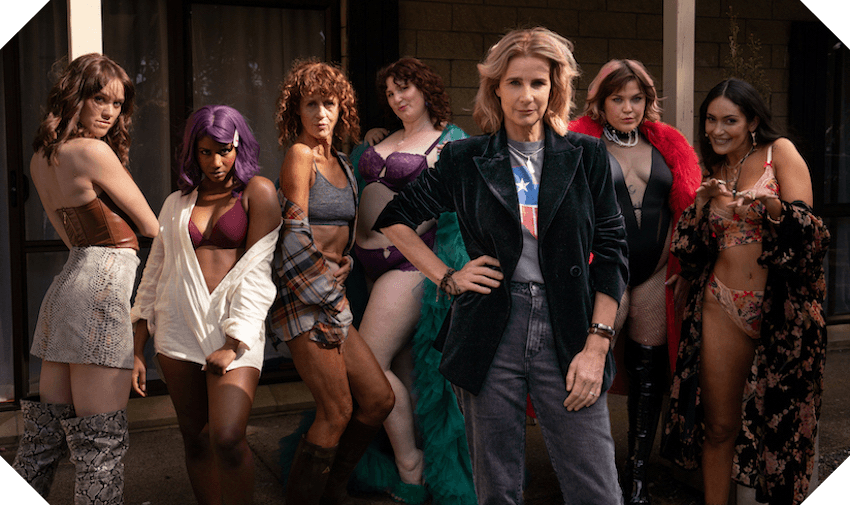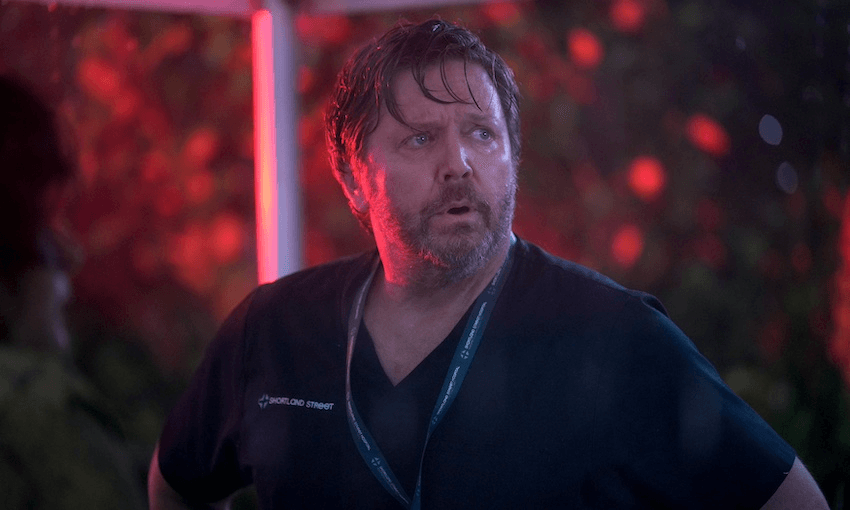A former sex worker responds to Three’s new local sex work dramedy.
There’s a sexy new local show on telly dealing with the world’s oldest profession. As a retired veteran of that profession, I’m here to tell you what elements it gets right and what it gets wrong. Madam is a half-hour dramedy developed by Tavake and XYZ Films in consultation with former madam Antonia Murphy, the New Zealand Prostitutes Collective, and sex workers whose names we may never know because of the stigma. Ngā mihi nui.
I will preface by saying that no one show could, or should, capture the complexities of an industry that is so defined by time, place, and personal experience. My opinions are shaped by over 15 years in both the screen and sex industry, though I acknowledge I am absolutely not the target audience for this primetime small town drama. In short: take the following list with a massive grain of cynical whore salt.
The madam
What it gets right: There are a lot of people out there who think they can change the sex game and make a killing in the process. Case in point: McKenzie aka Mack (played by Rachel Griffiths), our titular Madam-in-the-making who catches her husband with a sex worker and decides to get in on the action. Not by having sex with him, eww, but by starting an “ethical” brothel that prioritises worker safety and consent. Don’t let the gendered, feminist language fool you: a pimp is a pimp is a pimp (even if it’s a middle-aged, middle-class white American woman with a saviour complex, a failing marriage, and a disabled child). I have met so many Macks over the years. Thankfully, most of them never made it past the ideas stage.
What it gets wrong: I don’t buy how quickly established and poorly-managed Mack’s brothel, Sweethearts, is. Sex-based challenges aside, a brothel is still a business, and setting up a business of any kind requires careful planning and time. While the avoidable chaos may be a useful story engine for the show, Mack’s idealistic ineptitude makes the workers look naive and desperate for giving her so many chances.
The girls
What it gets right: The girls really are everything – both to the clients and to each other. They hype each other, help each other, and hold each other through the hardest parts of the job. No two workers are the same, and while they don’t always see eye-to-eye, they know it’s them against the world. There is some great casting in this show, resulting in some awesome on-screen chemistry that mirrors the buzz of a busy dressing room during a rush.
What it gets wrong: Sex workers are more complex than this! Tui (Ariana Osborne) does a lot of heavy lifting as the show’s most developed, multidimensional worker, but the rest of the Sweethearts are written like a chorus of caricatures that we are often being asked to laugh at, not with. This makes sense for a workplace comedy (think Brooklyn 99), but this show is more tonally sedate than that (think Weeds, but selling sex). I hope we get to spend more time getting to know the girls – they really are the best part of this show (and this industry).
The clients
What it gets right: Clients come in all shapes and sizes, with a wide variety of sexual and emotional desires and/or quirks. There are some eerily accurate comedic moments (shoutout to Mike Minogue for his killer performance as an assplay size king) alongside some clunkier scenes that try to demonstrate how difficult and entitled some clients can be.
What it gets wrong: Sex workers do not “need” problematic clients, as suggested by Tui, nor do clients “need” us. Workers need money, and clients want sexual services. Sex workers are not a social, emotional, sexual buffer for broken men – we are service providers who don’t always have the luxury of being selective about clients due to the stigmatised nature of our work.
The stigma
What it gets right: Friends, family, banks and neighbours will take moral issues with your business, and those that don’t have moral issues will still use stigma to bully workers and management for their own selfish means. (Full shade to the real-life inspo for the show’s fictional promo site “Kiwi Chicks”.) Where there is stigma, there is exploitation – the only way to make sex work safer is to destigmatise the profession.
What it gets wrong: The real-life stigma is so much worse than this show could ever hope to communicate. Madam does its best to put a fun spin on the industry, sprinkling the proverbial spoonful of sugar over the bleak reality of being denied housing, employment, banking, community and even your own humanity. That’s likely why the show takes an episode or two to find its feet tonally: it wants to make us laugh, but some things don’t feel right to laugh about.
The job
What it gets right: Sex work is work. Madam really showcases the story consultation process in action and, with some input from the NZPC, does its best to capture the day-to-day madness and mundanity of the job. While the series has plenty of moments that’ll make workers roll their eyes, it’s a good crash course in decriminalised sex work for local and global audiences.
What it gets wrong: As valiant an effort as has been made, this series once again proves that consultation alone is not enough. Sex work has soul. This profession is so much more than just a job, and you’ll never truly get that until you’ve done the job. The devil really is in the details – details that you cannot capture without actual sex workers on your core creative team. If you want to ethically and effectively make money off sex worker stories, hire sex workers to tell them. Or better yet, support us to tell our own.
Is Madam a perfect show? No. Should you watch it? Yes! It’s sweet, it’s silly, and it’s trying really hard to start an important conversation about the destigmatisation of sex work. So let’s have that conversation now.



